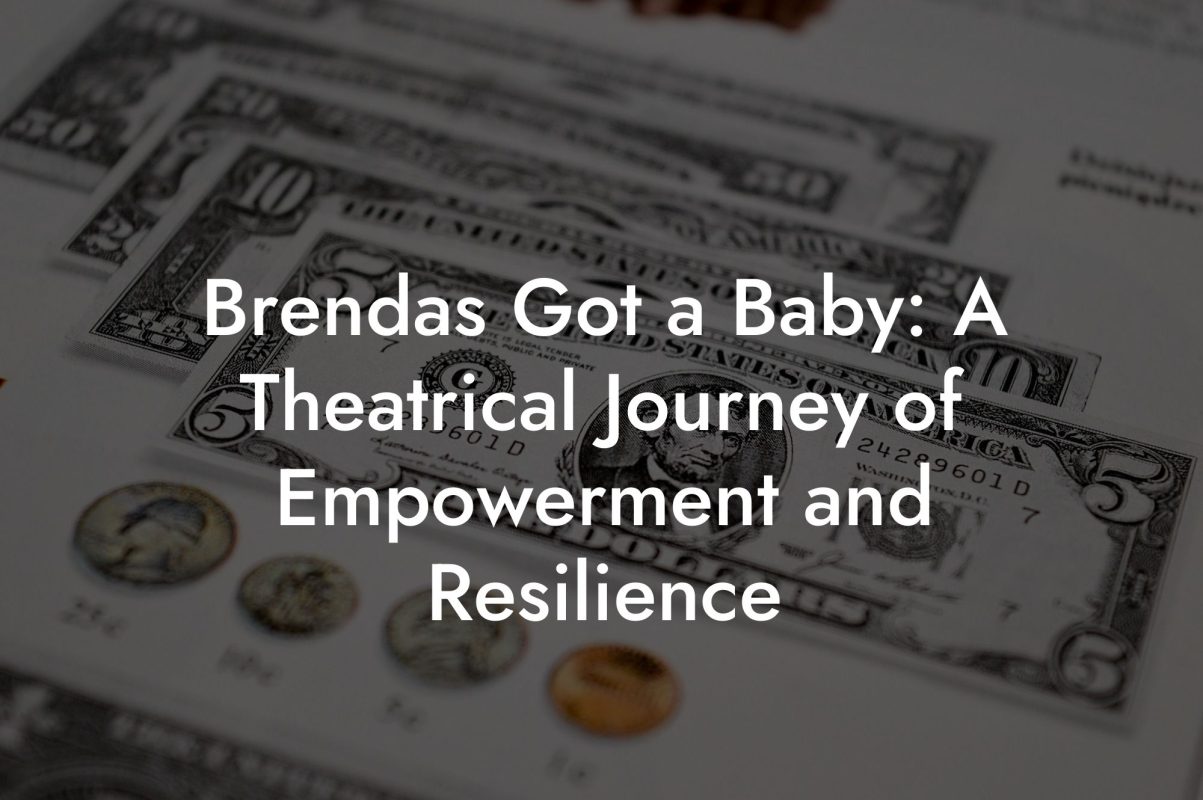Ready to dive into the high-stakes world of finance where the stakes are as real as your morning coffee, and the decisions could fuel your next big move? Whether you’re a savvy Gen Z entrepreneur, a millennial hustler, or simply trying to demystify the maze of financial jargon, “Letter of Credit Vs Line of Credit” is here to break it all down for you in a refreshingly relatable, no-BS style.
Letter of Credit Vs Line of Credit Table of Contents
Understanding the Basics: What’s a Letter of Credit?
Decoding the Line of Credit: An Intro for the Everyday Finance Buff
Letter of Credit vs Line of Credit: Core Differences You Need to Know
In-Depth Look at Letters of Credit: The Ultimate Safety Net in Trade
Digging Deeper into Lines of Credit: Your Financial Flexibility Toolkit
Comparing the Pros and Cons: Weighing Your Options
Real Life Scenarios: When to Use Which?
How Do Banks Decide Who Gets What?
Letter of Credit Vs. Line of Credit: The Millennial and Gen Z Perspective
Tech Advances and Future Trends: What’s Next for Credit Instruments?
Resources and Community Support: Your Next Steps
Crafting Your Financial Strategy with Confidence
Frequently Asked Questions about Letters of Credit and Lines of Credit
Your Financial Future: Empowered Decisions, Unmatched Flexibility
Understanding the Basics: What’s a Letter of Credit?
At its core, a Letter of Credit (LC) is a financial guarantee issued by a bank on behalf of its customer to ensure that a seller receives payment. Think of it as a super-secure IOU that banks use when large sums and trust issues are involved. Traditionally used in international trade, an LC minimizes risk by assuring the seller that they will get paid as long as they meet the terms of the deal. The bank steps into the shoes of a trusted middleman, making sure both parties can sleep well at night.
Letters of Credit are like the VIP passes of global trade. They come with a set of disciplines: producers or suppliers provide goods, present shipping documents that verify the transaction, and then the bank, forever the responsible adult, releases funds. For businesses that rely on foreign suppliers or buyers, the LC is the financial equivalent of a rock-solid handshake.
In our digital age, while many transactions have moved online, the letter of credit retains its charm by offering undeniable security when colossal sums or cross-border transactions are involved. It’s like having a reliable friend who ensures the ride home is safe—even if you’re juggling several flaming torches at once.
Decoding the Line of Credit: An Intro for the Everyday Finance Buff
On the flip side, let’s talk about the Line of Credit (LOC). This financial tool is less like a diplomatic note and more like an open tab at your favorite hangout spot. A line of credit is an arrangement between a financial institution and a customer that allows the latter to borrow up to a predetermined limit whenever needed. Whether you’re managing cash flow for your small business or just need a quick buffer for rent and groceries, a LOC can be a lifesaver.
Unlike a letter of credit, which is transaction-specific, a line of credit is delightfully flexible. You can borrow money, repay it, and borrow again, all while paying interest only on the amount you actually use. It’s the financial embodiment of “just in case” – a safety net that’s there when you need it without being overly intrusive.
For millennials and Gen Zers, who often juggle multiple streams of income and unpredictable expenses, having a line of credit means never having to worry about an unexpected invoice or a spontaneous opportunity that requires immediate capital. It’s a dynamic tool that adapts to the rhythms of your cash flow.
Letter of Credit vs Line of Credit: Core Differences You Need to Know
Although both letters of credit and lines of credit serve as financial tools, they certainly aren’t twins—more like cousins who share a bank account and occasionally swap dramatic stories of risk and reward.
Purpose and Use Cases
A letter of credit is typically used in international trade or high-stakes domestic transactions where security and trust are paramount. It guarantees the seller that payment will be made once the agreed-upon conditions are met. This is particularly helpful when the buyer and seller are in different countries or when the amounts involved are substantial.
Conversely, a line of credit functions as a ready-to-use reservoir of funds. It is often used for a range of purposes—from covering operational expenses to managing short-term liquidity challenges. Whether you’re a startup facing fluctuating cash flow or an individual in need of emergency funds, a LOC is there to bridge the gap.
Risk Management
When it comes to mitigating risk, letters of credit are the Fort Knox of financial instruments. They are structured with strict documentation and compliance requirements. If the terms aren’t met, the bank doesn’t release the money, protecting the seller from potential losses.
Lines of credit, on the other hand, offer flexibility over strict oversight. While they do require solid creditworthiness and periodic reviews, they operate on a revolving credit basis. This means that if you repay what you owe, your available credit refreshes—an ongoing cycle that equals financial agility.
Cost and Fees
Letters of credit aren’t free—a premium fee is charged by banks for this low-risk guarantee. These costs are typically factored into the overall pricing strategy of international deals. They ensure that the bank is compensated for the risk and administrative complexities of processing these instruments.
With lines of credit, costs usually come in the form of interest charges and sometimes annual or maintenance fees. The interest is charged only on the utilized portion of the line, which makes it an attractive option if you can manage your borrowing smartly.
Documentation and Process Complexity
Letters of credit demand a mountain of paperwork. Every detail must be meticulously documented; from invoices and shipping documents to quality certifications and delivery confirmations—the list is long. This rigor ensures that each party’s obligations are clear and enforceable.
Lines of credit, in contrast, are relatively straightforward. Once you’re approved, you can draw funds as needed without generating new paperwork for each transaction. This simplicity gives you more time to focus on growing your business—or on your next binge-watch session.
In-Depth Look at Letters of Credit: The Ultimate Safety Net in Trade
Let’s venture further into the realm of letters of credit. They operate as a safety net for cross-border transactions and high-value domestic deals. Essentially, they ensure that a seller is paid for the goods shipped, provided that the shipment meets the strict criteria outlined in the credit. In transactions where trust between parties is still in its early stages, the LC is nothing short of a financial lifesaver.
The process begins when the buyer requests the issuance of a letter of credit from their bank. The bank, after a thorough review, issues the LC and forwards it to the seller’s bank. The seller then examines the credit for its terms and conditions before proceeding with the shipment. Once the goods are shipped, the seller presents the necessary documents to their bank, which then checks the credentials and, if everything checks out, releases the funds.
This complex dance of documents, checks, and balances might seem over-the-top, but it’s exactly these precautions that make letters of credit so dependable in industries fraught with risk. From large-scale manufacturing orders to international commodity trades, LCs are the go-to option when trust is a rare commodity.
For businesses navigating unfamiliar markets, relying on LCs provides reassurance. It’s like having an expert mediator in a high-stakes negotiation—ensuring that both parties stick to the rules and that the deal is executed as agreed.
Digging Deeper into Lines of Credit: Your Financial Flexibility Toolkit
Now, let’s give credit (pun intended) to the humble line of credit, the unsung hero behind many smart financial decisions. As we’ve touched upon earlier, a line of credit grants you access to funds up to a predetermined limit, much like having a reserve fund that you can dip into as needed. This type of credit is particularly popular among businesses and individuals who prefer having revolving credit at their disposal.
What makes a line of credit so attractive is its versatility. Unlike term loans that come with rigid repayment schedules and fixed amounts, LOCs offer you the freedom to borrow, repay, and re-borrow—over and over. Imagine having an emergency stash that you can effectively reboot each time you clear a debt. It’s flexibility at its finest.
For instance, small business owners often use lines of credit to manage everyday operational expenses. Whether it’s buying inventory in bulk or handling unforeseen expenses, a LOC provides that financial cushion. And for individuals, it might be the secret weapon that helps navigate periods of irregular income or unexpected bills.
With a line of credit, the bank assesses your creditworthiness and then sets a borrowing limit based on your financial history and future prospects. As long as you adhere to the repayment terms, you can enjoy the benefits of accessible funds with minimal fuss. It’s a sleek, robust solution perfectly tailored for the dynamic financial landscapes of today.
Comparing the Pros and Cons: Weighing Your Options
When it comes to choosing between a letter of credit and a line of credit, the decision isn’t always black and white. Each has its own set of strengths and limitations, and the best choice largely depends on the context and specific needs of the business or individual.
Pros of Letters of Credit
- Enhanced Security: Offers ironclad assurance to sellers that payments are guaranteed, reducing the risk involved in hefty transactions.
- Trust Building: Particularly useful in international trade where buyer-seller trust is not well-established.
- Risk Mitigation: Shifts the risk from the seller to the bank provided all conditions are met, thereby reducing financial exposure.
- Compliance Driven: The stringent documentation requirements ensure that all parties meet their contractual obligations.
Cons of Letters of Credit
- Costly: Processing fees and administrative costs can add up, which might deter businesses with tighter margins.
- Complex Procedures: The rigorous documentation and verification process can be time-consuming and intimidating.
- Limited Flexibility: Once issued, the terms are fixed and do not adapt well to changing conditions during the transaction.
Pros of Lines of Credit
- Financial Flexibility: Access funds on an as-needed basis without generating a new loan for each transaction.
- Simplified Process: Fewer administrative hurdles mean that you can focus on using the funds rather than jumping through hoops.
- Cost-Effective: Interest is typically charged only on the funds utilized, making it a budget-friendly option during low borrowing periods.
- Revolving Availability: As you repay your borrowed amount, your credit limit is refreshed, ensuring ongoing liquidity.
Cons of Lines of Credit
- Variable Interest Rates: Depending on market conditions, interest rates may fluctuate, increasing borrowing costs unexpectedly.
- Credit Dependency: Your borrowing limit is contingent on your credit score and financial health, which might restrict access for those with less-than-stellar credit histories.
- Potential for Over-Borrowing: The ease of drawing funds can sometimes lead to over-borrowing, trapping users in an extended cycle of debt.
The ideal financial instrument between these two largely hinges on your specific goals. For international transactions demanding ironclad security, the letter of credit might be the golden ticket. Conversely, if you crave flexibility in managing everyday finances or business cash flow, the line of credit offers the adaptable solution you need.
Real Life Scenarios: When to Use Which?
Let’s break it down with a couple of real-life scenarios that even your friend who binge-watches financial tutorials on YouTube would appreciate.
Scenario 1: Global Trade Deal
Imagine you’re running a business that sources unique, handcrafted goods from overseas artisans. You sign a multimillion-dollar deal with a supplier from India. Trust is good, but distance is a drag. This is the perfect scenario for a letter of credit. The LC ensures the supplier ships first, complying with all stipulated documentation, and only then does the bank release funds. It’s the ultimate safety net in a game where there’s no room for mishaps.
Scenario 2: Managing Daily Business Expenses
Now, picture yourself as a millennial entrepreneur juggling multiple projects. There are days when incoming payments and outgoing expenses are out of sync—hello cash flow crunch! Here, a line of credit can be your secret weapon. Need to cover unexpected supplier costs or ramp up your marketing on a hot lead? Dip into your LOC, repay it when the cash flows in, and repeat. It’s like having an elastic wallet that stretches when you need it most.
Scenario 3: Renovating a Home Office
Even on the personal finance front, these instruments have their place. Suppose you decide your home office needs a makeover to boost productivity, and you determine that investing in some much-needed tech upgrades is a priority. A line of credit can help spread the cost over time, offering you the funds upfront and a flexible repayment plan to fit your budgeting cycle.
These scenarios illustrate how letters of credit excel in mitigating risk in large-scale, international operations, while lines of credit offer that everyday financial flexibility essential for both businesses and individuals.
How Do Banks Decide Who Gets What?
Have you ever wondered how banks decide whether a business or individual should get an LC or a LOC? The process is a blend of art and science, balancing rigorous due diligence with an appreciation for unique financial scenarios.
For letters of credit, banks assess the credibility of the buyer, the reliability of the seller, and the intricacies of the transaction. This deep dive involves evaluating the buyer’s credit history, scrutinizing the transaction’s value, and verifying the authenticity of the shipping and compliance documents. The bank’s risk management team then works like a well-oiled machine to ensure that all conditions are ripe for a secure transaction.
Conversely, lines of credit require a comprehensive review of overall financial health. Banks look at your credit score, revenue trends, cash flow patterns, and even your business model. It’s a holistic picture that determines how much you can borrow and at what interest rate. Think of it as a financial mirror reflecting your past performance and future potential.
The key takeaway? Both tools are designed to protect the lender from undue risk while empowering you with the financial means you need. It’s a delicate balance that keeps the wheels of commerce turning smoothly.
Letter of Credit Vs. Line of Credit: The Millennial and Gen Z Perspective
Money might not grow on trees, but for today’s digital natives, navigating the world of finance feels like deciphering a complex algorithm. As a millennial or Gen Z, you’re used to fast, flexible, and transparent solutions—qualities that resonate strongly with a line of credit. You want options at your fingertips, quick access to funds, and a flexible repayment schedule that grooves with your unpredictable lifestyle.
At the same time, when the stakes are high and international business is involved, a letter of credit offers a level of security that’s hard to beat. You’re balancing appeal with practicality, and while you might not use an LC every day, knowing it exists as a safety net is invaluable—kind of like having a trusted advisor in your corner during high-profile negotiations.
The current digital economy demands transparency, flexibility, and rapid response. Whether it’s keeping your startup afloat during a cash flow slump or sealing an international deal with a high-stakes supplier, understanding both instruments is essential. Your financial choices today set the stage for tomorrow’s success.
Tech Advances and Future Trends: What’s Next for Credit Instruments?
Even if you're not an economics nerd, you probably notice that technology is transforming every facet of our lives—finance is no exception. The digital age is reshaping how banks issue letters of credit and lines of credit. Think blockchain-based letters of credit that eliminate paperwork, improve transparency, and boost processing speed. These tech marvels are set to revolutionize international trade by slashing processing times and reducing fraud.
Similarly, fintech innovations have made lines of credit more accessible. Mobile apps and online platforms now enable you to check your credit limit in real time, request draws, and even automate repayments. These advancements ensure that whether you’re in the middle of a creative project or launching the next big startup, you have the financial flexibility of a line of credit right in your pocket.
The future promises enhanced integration between traditional banking and innovative digital solutions—providing a seamless experience that marries reliability with speed. For the forward-thinking entrepreneur or the savvy individual planner, staying informed about these trends is as crucial as checking your social media feed for the latest memes.
Resources and Community Support: Your Next Steps
Navigating financial tools doesn’t have to be a solo expedition. Thanks to an abundance of online resources, communities, and experts, you have a treasure trove of support available at your fingertips. Blogs, financial podcasts, webinars, and online forums are great places to learn, ask questions, and share experiences with peers who have been through the financial wringer.
Consider joining finance-focused communities on platforms like Reddit, LinkedIn, or specialized financial apps. Look for online courses that break down complex topics like international trade financing or personal finance management in an engaging, bite-sized format. Engaging in these communities not only helps you stay updated on the latest trends and innovations but also provides a network of like-minded individuals who can offer guidance and inspiration.
Additionally, many banks and fintech companies host free webinars and interactive sessions to demystify both letters of credit and lines of credit. Attend these sessions if you’re curious about how to leverage these tools for your personal or business finances. The more you know, the better equipped you’ll be to make decisions that empower your financial journey.
Remember, your financial well-being isn’t just about numbers—it’s about understanding your options, exploring innovative alternatives, and continuously learning. Embrace the journey with the same curiosity you bring to discovering your next favorite app or trending meme.
Crafting Your Financial Strategy with Confidence
Whether you lean towards the robust security of a letter of credit or the unmatched flexibility of a line of credit, the ultimate goal is to build a robust financial strategy that aligns with your lifestyle. Here are some tips to help you harness these financial instruments effectively:
1. Define Your Financial Goals
First off, clarify what you’re trying to achieve. Are you looking to expand your business into foreign markets or stabilize your short-term cash flow? Pin down your priorities, and choose the tool that best aligns with your objectives.
2. Do Your Homework
Knowledge is power. Research your options, compare fees, interest rates, and borrowing limits. Utilize online calculators and financial planning tools to get a clear picture of costs and benefits. Never hesitate to consult a financial advisor or reach out to your bank for tailored advice.
3. Stay on Top of Market Trends
The world of finance is ever-evolving. Keeping pace with industry trends—whether it’s digital transformation, regulatory changes, or new financial products—will keep you ahead of the curve. Subscribing to newsletters or joining financial webinars can be game-changing.
4. Use Multiple Instruments When Needed
Sometimes, hybrid approaches work best. For instance, leveraging both a letter of credit for international transactions and a line of credit for daily cash flow management creates a balanced financial ecosystem that covers all your bases.
5. Monitor, Adjust, and Optimize
Finance is not a “set it and forget it” scenario. Regularly review your financial plan, assess how well your chosen tools are serving you, and adjust as necessary. Flexibility and responsiveness are the cornerstones of a resilient financial strategy.
By understanding the nuances of letters of credit and lines of credit, you’re not just making a choice—you’re strategizing with precision, backed by industry insights and innovative financial tools. With the right blend of knowledge, flexibility, and foresight, you can build a financial pathway that stands the test of time.
Frequently Asked Questions about Letters of Credit and Lines of Credit
Here are answers to some burning questions you might have about these essential financial instruments:
1. What exactly is a Letter of Credit?
A letter of credit is a guarantee from a bank that a seller will receive payment once specific documents and conditions are met in a transaction—primarily used in international or high-value domestic deals.
2. How does a Line of Credit work?
A line of credit is a flexible borrowing arrangement where a bank sets a credit limit for you. You can draw on these funds as needed and pay interest only on the amount you use.
3. When should I consider using a Letter of Credit?
Use a letter of credit when dealing with high-risk or international transactions where ensuring that all parties meet their obligations is critical.
4. Can a Line of Credit help manage cash flow issues?
Absolutely. Lines of credit are ideal for managing daily expenses, bridging temporary cash flow gaps, or funding short-term projects.
5. What are the primary costs involved with a Letter of Credit?
Letters of credit come with processing fees, administrative costs, and sometimes additional charges for amendments or discrepancies.
6. Are interest rates fixed on Lines of Credit?
Interest rates on lines of credit are typically variable, meaning they can fluctuate with market conditions, though some arrangements might offer fixed-rate options.
7. Do I need special documentation for a Letter of Credit?
Yes, letters of credit require thorough documentation like invoices, shipping documents, and compliance certificates to confirm that all transaction conditions have been met.
8. How quickly can I access funds from a Line of Credit?
Once your line of credit is approved, you can generally access funds almost instantly, whether via mobile banking apps or online platforms.
9. Can both tools be used by small businesses and individuals?
While letters of credit are more common in business-to-business or international transactions, lines of credit are widely used by both small businesses and individuals as flexible financing options.
10. How do I know which option is better for my needs?
The decision hinges on the size, nature, and risk of your financial transactions. For high-value, risk-sensitive deals, consider a letter of credit; for ongoing, flexible financing, a line of credit is often the better choice.
Your Financial Future: Empowered Decisions, Unmatched Flexibility
Navigating the financial jungle may seem daunting, but understanding the crucial differences between a letter of credit and a line of credit is your first weapon against uncertainty. Both these tools offer unique advantages that can play major roles in your personal and business financial strategies. The key is to match the instrument to your specific needs, risk tolerance, and goals.
Whether you’re sealing international deals with an ironclad letter of credit or flexing the financial flexibility of a line of credit to manage everyday challenges, each tool transforms risk into opportunity. By arming yourself with these insights and continuously staying informed of market trends, you’ll be well-positioned to make decisions that truly empower you.
So, take a deep breath, pat yourself on the back for diving into the nitty-gritty of banking instruments, and remember: your financial strategy is as unique as you are. Embrace the confidence that comes from knowing the ins and outs of these instruments. And if you ever feel a little overwhelmed, just recall that every financial expert started exactly where you are today!
Your journey toward financial empowerment is ongoing, and with the right tools and a proactive mindset, the future is yours to shape. Here’s to informed decisions, robust security, and the kind of financial flexibility that lets you take on the world—one smart move at a time.













